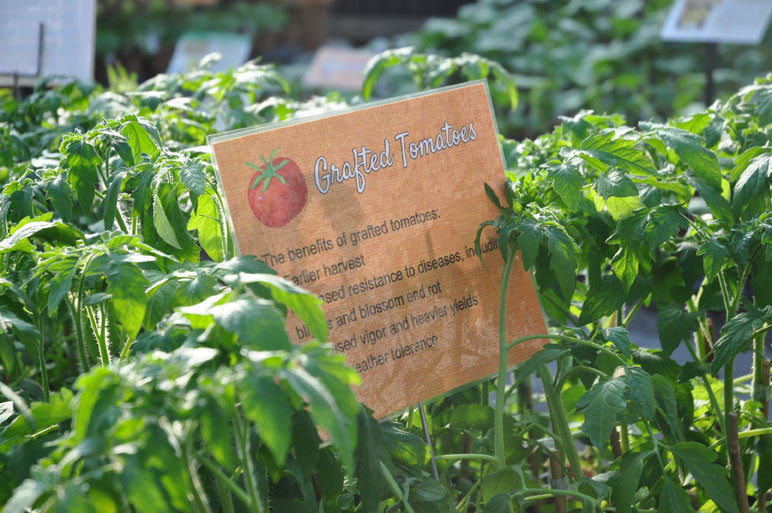So why put in all that effort? The technique has been around for centuries, but has recently been gathering momentum among organic vegetable growers, owing to the significant benefits of higher yields and reduction in disease associated with grafted plants - results that might otherwise be managed through the use chemical fertilizers and pesticides/fungicides. Among the specific problems grafting can alleviate, blossom end rot, fungal blights and heat stress are three that most home gardeners can relate to. The technique is also becoming popular as a way to get higher yields on the tastiest, but some times lower yielding, heirlooms such as Black Krim Tomato. A commonly cited increase in yields is a doubling, which makes the plants very appealing where space is limited.
In the case of the potato-tomato plant (Ketchup N' Fries), two related but obviously different plants have been successfully joined. When you grow this you are in fact growing both a potato and a tomato, but through the grafting technique gardeners with limited growing area can save significantly on square footage! The potatoes involved are a classic late season white fleshed variety and the tomatoes are a vigorous and sweet early cherry type. The original breeders were in England, and they spent over 15 years figuring out how to get the right varieties together, as potato seedlings develop differently from tomato seedlings (making the actual grafting process more tricky) and they also needed to find the best combination of potato and tomato varieties to get strong yields. This plant is not only a novelty, but actually a producer!
 Growing the grafted veggies is similar to growing regular vegetable plants, with one difference: when you plant them, you need to avoid burying the graft. That just means not planting deep the way we are taught to do with regular tomatoes. The exception is with Ketchup n' Fries, where you do plant the graft bellow the soil line, but we have taken care of that already in the pots). As with most tomatoes, staking is helpful (or required, depending on the plant).
Growing the grafted veggies is similar to growing regular vegetable plants, with one difference: when you plant them, you need to avoid burying the graft. That just means not planting deep the way we are taught to do with regular tomatoes. The exception is with Ketchup n' Fries, where you do plant the graft bellow the soil line, but we have taken care of that already in the pots). As with most tomatoes, staking is helpful (or required, depending on the plant). It is our first year growing grafted vegetables, so we look forward to seeing their performance in our gardens. Actually, it is clear even from the potted nursery plants that the grafted versions of Black Krim, San Marzano, Stupice and Purple Bumblebee Tomatoes have extra gusto - they are growing noticeably stronger already. And we have had small potatoes already on the Ketchup N' Fries.
If you are interested in growing grafted vegetables, we currently have the following available (as of June 3, 2016):
San Marzano Tomato
Stupice Tomato
Bumblebee Purple Tomato
Black Krim Tomato
Jalapeno Pepper
Orange Bell Pepper
Ketchup N' Fries (Potato-Tomato)







